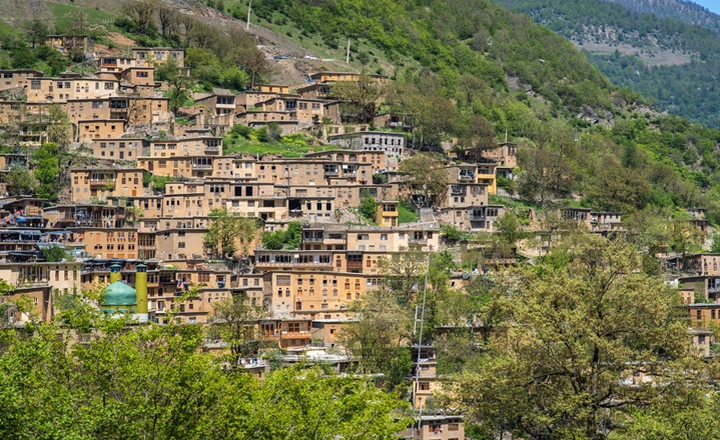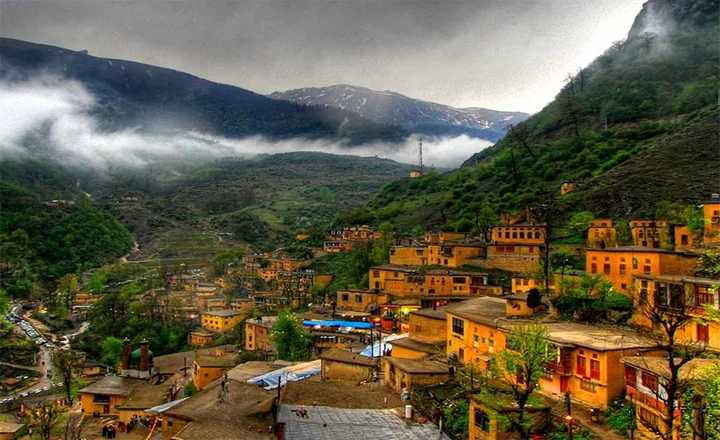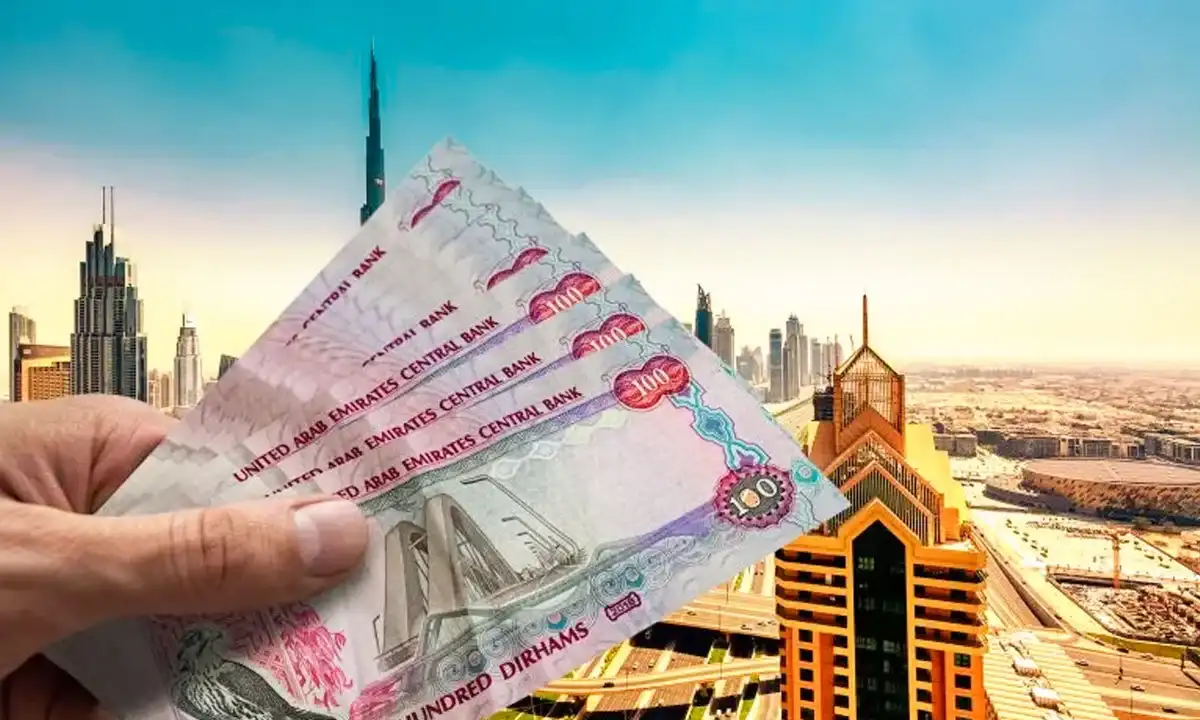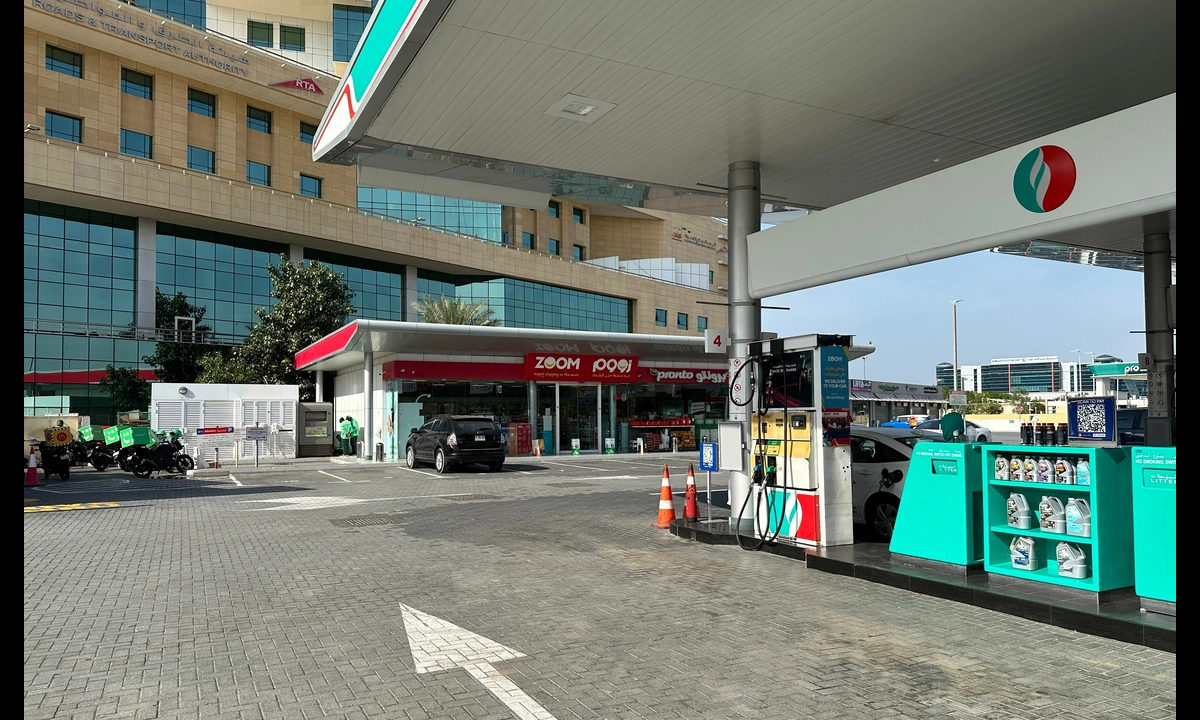Masuleh Village; The First Historic Village of Iran
![]() Author : asal | Date : Tuesday 02 April 2024 15:15
Author : asal | Date : Tuesday 02 April 2024 15:15
.webp)
Masuleh village, located in northern Iran, is renowned for its unique architecture, characterized by tightly packed, multicolored buildings cascading down the mountainside. This historical gem offers visitors a glimpse into traditional Iranian life, with narrow alleyways and quaint courtyards to explore. Surrounded by verdant forests and boasting a pleasant climate, Masuleh is a haven for nature lovers and cultural enthusiasts alike. Its picturesque charm and rich heritage make it a must-visit destination for travelers seeking an authentic Iranian experience.
Masuleh: Unraveling Village History
Nestled amidst the verdant landscapes of northern Iran, Masuleh village stands as a testament to centuries of rich history and cultural heritage. Perched on the slopes of the Alborz Mountain range, this picturesque village boasts a captivating charm that has captivated visitors for generations.
The history of Masuleh traces back to antiquity, with archaeological evidence suggesting human habitation in the area dating back over a millennium. Over the centuries, Masuleh has witnessed the rise and fall of various civilizations, each leaving its mark on the village's cultural tapestry.
One of the most distinctive features of Masuleh is its unique architectural style. The village is renowned for its tightly packed, multicolored buildings that cascade down the mountainside in a maze-like layout. This architectural design, which has remained largely unchanged for centuries, reflects the ingenuity of the village's inhabitants in adapting to the challenging mountain terrain.
Masuleh has also played a significant role in Iran's history, serving as a strategic trading hub along the ancient Silk Road. The village's location on key trade routes facilitated the exchange of goods, ideas, and cultures between the East and West, contributing to its vibrant and diverse cultural heritage.
Today, Masuleh continues to enchant visitors with its timeless beauty and rich history. The village has been designated a UNESCO World Heritage Site, recognizing its importance as a cultural treasure of humanity. From its ancient cobblestone streets to its historic mosques and bazaars, Masuleh offers a glimpse into Iran's storied past and serves as a living testament to the resilience and creativity of its people.
Read More:✔️ Chogha Zanbil; Oldest Elamite Ziggurat in the Near East
Elevating Tradition: The Architectural Marvels of Masuleh Village
Masuleh Village, situated in the lush greenery of northern Iran's Alborz mountain range, is celebrated for its remarkable architectural heritage. This title encapsulates a comprehensive exploration of the village's architectural marvels, shedding light on its unique building styles, construction techniques, and cultural significance.
At the heart of Masuleh's architectural allure is its distinctive layout, which sees buildings tightly clustered along steep mountain slopes. The village's terraced arrangement not only maximizes land use but also provides stability against the region's frequent earthquakes. The homes, constructed from locally sourced materials such as clay, wood, and stone, showcase a harmonious blend of functionality and aesthetic appeal.
One of the most notable features of Masuleh's architecture is its colorful facades, adorned with intricate patterns and motifs. These vibrant exteriors not only add to the village's picturesque charm but also serve practical purposes, helping residents identify their homes in the maze-like layout and brightening up the landscape during the long winter months.
The architectural style of Masuleh is deeply rooted in the village's history and cultural heritage. Masuleh's buildings reflect a rich tapestry of cultural exchange and adaptation influenced by centuries of Persian, Kurdish, and Azerbaijani traditions. From the traditional courtyard houses to the ornate mosques and public squares, each architectural element tells a story of resilience, creativity, and community spirit.
In recent years, efforts have been made to preserve and promote Masuleh's unique architectural heritage. Conservation projects aim to safeguard the village's historic buildings against decay and deterioration while ensuring that traditional building techniques are passed down to future generations. Additionally, tourism initiatives seek to showcase Masuleh's architectural splendor to visitors from around the world, fostering appreciation for this hidden gem of Iranian heritage.

When is the best time to travel to Masuleh? How much does it cost?
Spring and summer are the ideal seasons to visit Masuleh. During spring, temperatures range from 13°C to 32°C, while summer sees them climb to 19°C to 36°C. However, fall and winter are less favorable due to chilly weather and heavy rainfall. As you know there are some ways to travel to Masuleh:
- Car Rental with Driver: Renting a car with a driver directly to Masuleh costs approximately $100. The distance is approximately 450 km, and the journey takes about 5 hours.
- Rent a car without a driver: Also you can rent a car and start your journey. You should know that the price of renting a car without a driver depends on the car that you choose.
- Public Transportation: If you prefer public transportation, head to Mehrabad Airport or Azadi Inter City Transport Terminal near Azadi Square in west Tehran. From there, take a bus or shared taxi to Rasht, and then continue to Masuleh.
| The Cost | Days to travel to Masuleh |
|---|---|
| 14$ | 1 Day |
| 18$ | 2 Days |
| 23$ | 3 Days |
Exploring the Vibrant Charms of Masuleh's Local Market
Masuleh's local market is a vibrant and bustling hub of activity, offering visitors a sensory feast of sights, sounds, and smells. Situated amidst the picturesque landscape of this historic village in northern Iran, the market serves as a focal point for both locals and tourists, providing a glimpse into daily life in Masuleh.
Wandering through the narrow alleys and cobblestone streets of Masuleh's market, visitors are greeted by a kaleidoscope of colors as vendors display their wares in traditional stalls and shops. From fresh produce and aromatic spices to handcrafted souvenirs and textiles, the market offers a diverse array of goods, each reflecting the rich cultural heritage of the region.
One of the highlights of Masuleh's local market is its lively atmosphere, filled with the sounds of vendors haggling, shoppers bargaining, and the call to prayer echoing from nearby mosques. The market is not just a place to buy and sell goods but also a social gathering spot where locals catch up with neighbors, share news, and exchange stories.
In addition to being a hub of commerce and social interaction, Masuleh's local market is a culinary delight for food enthusiasts. Street food stalls and small eateries offer a tantalizing array of traditional Iranian dishes, from savory kebabs and fragrant rice dishes to sweet pastries and refreshing beverages.
Visiting Masuleh's local market is not just about shopping; it's about immersing oneself in the vibrant culture and community spirit of this charming village. Whether exploring the market's labyrinthine lanes, sampling local delicacies, or simply soaking up the lively atmosphere, a visit to Masuleh's local market is an experience not to be missed.

Treasures of Masuleh: Authentic Souvenirs from the Village
Masuleh Village, nestled amidst the picturesque mountains of northern Iran, offers a delightful array of souvenirs that reflect its rich cultural heritage and artistic traditions. Visitors to Masuleh have the opportunity to take home unique mementos that capture the essence of this charming village.
Pottery:
Masuleh's handcrafted pottery reflects the village's artistic heritage, with artisans molding clay into intricate designs inspired by nature and Persian motifs. From bowls to decorative tiles, these pieces are timeless reminders of Masuleh's artistic legacy.
Carpets and Rugs:
Traditional Persian carpets and rugs from Masuleh are renowned for their exquisite craftsmanship and vibrant colors. Handwoven by skilled artisans using age-old techniques, each carpet tells a story with its intricate patterns and motifs, reflecting the cultural heritage of the region.
Sweets and Treats:
Masuleh offers a variety of local sweets and treats, from saffron-infused nougat to rosewater-flavored pastries. These traditional Iranian delicacies make for perfect gifts or indulgent treats to enjoy back home, tantalizing the taste buds with their unique flavors.
Handicrafts and Textiles:
Explore Masuleh's quaint shops and market stalls to discover a variety of handicrafts and textiles. From intricately embroidered textiles to handmade jewelry and traditional clothing, these artisanal creations showcase the talent and creativity of Masuleh's local craftsmen and women.
Read More:✔️Sheikh Safi al-Din Khānegāh and Shrine Ensemble
Discovering Masuleh Village: Exploring Its Charms
Masuleh Village, known for its stunning architecture, also boasts a plethora of tourist attractions waiting to be explored. Embark on a journey to Masuleh Village and immerse yourself in the beauty of its natural wonders and cultural treasures. Whether chasing waterfalls, exploring lush forests, or venturing into the rugged mountains, Masuleh offers an unforgettable adventure for travelers seeking to connect with the soul of Iran's northern highlands. Let's delve into some of the highlights:
Koosham Waterfall:
Nestled amidst the verdant landscape of Masuleh, the Koosham waterfall stands as one of the village's most breathtaking natural wonders. With a height of 30 meters, this picturesque cascade is easily accessible and offers a serene retreat along the riverway.

Masuleh Village Forest Park:
Spanning an expansive 2,400 hectares, the Masuleh Village Forest Park is a pristine oasis nestled within the majestic Masuleh Mountains. Its diverse vegetation plays a vital role in environmental preservation and provides an idyllic setting for strollers and nature enthusiasts.

Larcheshmeh Waterfall:
Cascading from a height of 6 meters, the Larcheshmeh waterfall is renowned as one of northern Iran's most enchanting natural attractions. Surrounded by lush vegetation, this tranquil oasis offers a serene escape for visitors seeking solace in nature.
Koubar Region:
Situated amidst the picturesque highlands of northern Iran, the Koubar region beckons adventurers with its breathtaking landscapes and opportunities for ecotourism. From backpacking to mountain climbing, this scenic locale promises a unique and unforgettable experience in the heart of nature.

The Ideal Season for Exploring Masuleh Village
Every day in Masuleh spring may be spent with the weather. It may snow one day and then be bright the next. One day, it might be a combination of the two. This season, you should be ready for any type of weather change.
April brings cooler temperatures and more wet and snowy days. Many people and tourists believe that April is the most beautiful season of the year. When the effects of the winter cold have subsided and spring has arrived. Colorful wildflowers pull your attention to them, and everything is so gorgeous and intriguing that you can't stop watching them. In June, the weather is typically bright, and when the weather warms up, you may enjoy beautiful days in Masuleh.
Masuleh's summer weather is less varied than in the spring. In the summer, you may appreciate the city's splendor away from the constantly dreary and wet weather by strolling around the Masuleh market and admiring the colorful summer flowers and fruits. Even in the summer, the air in Masuleh is cool and not too harsh. Many visitors visit Masuleh during this time of year, thus it is necessary to book a reservation in advance.
Masuleh will reveal another aspect of its beauty in the autumn, enchanting you with its golden and orange hues. Masuleh Road in the fall provides an exceptional experience for people who enjoy driving and road vacations. Most fall days are wet, and the evenings are chilly, so bring warm clothes.
Masuleh will reveal another aspect of its beauty in the autumn, enchanting you with its golden and orange hues. Masuleh Road in the fall provides an exceptional experience for people who enjoy driving and road vacations. Most fall days are wet, and the evenings are chilly, so bring warm clothes.

Lodging Options in Masuleh Village
Masuleh Village offers a variety of accommodation options to suit the preferences and budgets of every traveler. From traditional-style hotels to cozy guesthouses and rental houses, visitors have a range of choices for their stay in this charming village.
Traditional-Style Hotels:
Two traditional-style hotels in Masuleh provide comfortable accommodations for tourists looking to immerse themselves in the village's rich cultural heritage. These hotels offer a blend of authenticity and modern amenities, ensuring a memorable stay for guests.
Guesthouses:
For those seeking a more intimate and personalized experience, guesthouses in Masuleh provide a cozy retreat amidst the village's picturesque surroundings. Hosts often welcome guests with warm hospitality, offering insights into local culture and traditions.
Rental Houses:
Additionally, rental houses are available for tourists who prefer a self-catering option or desire more space and privacy during their stay. These houses, often nestled within the heart of the village, provide a home-away-from-home experience for visitors seeking independence and flexibility.
Read More:✔️ Sheikh Baragh Historical Complex or Chalapi Oghli
Getting to Masuleh Village
To reach Masuleh village by car, travelers typically pass through Qazvin, Manjil, and then Fouman, eventually arriving at the historic village of Masuleh. This scenic route offers glimpses of diverse landscapes and ensures an adventurous journey to this captivating destination nestled amidst northern Iran's picturesque mountains.
Last Word
Masuleh Village stands as a testament to Iran's rich cultural heritage, embodying centuries of history and tradition. As the first historic village of Iran, Masuleh holds a special place in the hearts of Iranians and visitors alike, offering a glimpse into the country's ancient past. With its unique architecture, breathtaking natural surroundings, and vibrant community, Masuleh continues to enchant and inspire all who have the privilege of experiencing its timeless charm. As a beacon of heritage and pride, Masuleh Village remains a cherished symbol of Iran's enduring legacy for generations.
FAQ
What makes Masuleh Village the first historic village in Iran?
Masuleh Village holds the distinction of being recognized as the first historic village in Iran due to its centuries-old history, which dates back to antiquity. Its unique architectural style, cultural significance, and continuous habitation throughout the ages contribute to its status as a landmark of Iran's rich heritage.
What historical significance does Masuleh Village hold?
Masuleh Village boasts a rich historical legacy, serving as a testament to Iran's ancient civilizations and cultural evolution. Its strategic location along historic trade routes, evidence of ancient settlements, and preservation of traditional customs make it a focal point for historians and archaeologists interested in exploring Iran's past.
How does Masuleh Village contribute to Iran's cultural heritage?
Masuleh Village plays a crucial role in preserving and promoting Iran's cultural heritage through its unique architectural style, traditional way of life, and ongoing efforts to safeguard its historic sites. As a living testament to Iran's cultural diversity and resilience, Masuleh Village serves as a source of pride for Iranians and a symbol of cultural continuity for future generations.
What can visitors expect to experience in Masuleh Village?
Visitors to Masuleh Village can expect to immerse themselves in a journey through time, exploring cobblestone streets, ancient mosques, and traditional homes that bear witness to centuries of history. The village's breathtaking natural scenery, warm hospitality, and vibrant cultural scene offer travelers a truly unforgettable experience steeped in Iran's rich cultural heritage.





